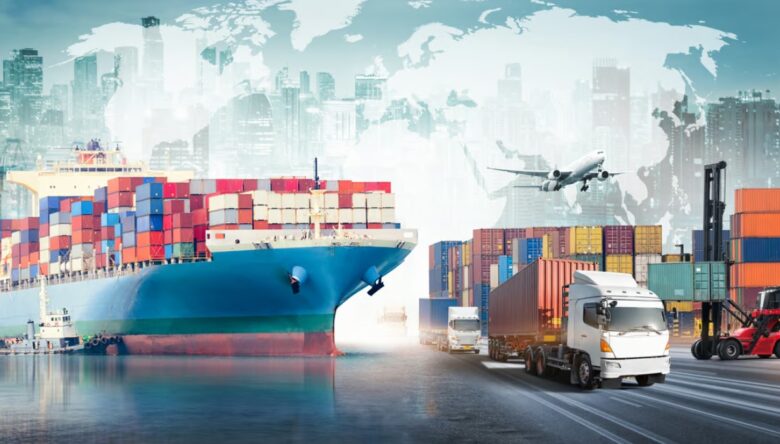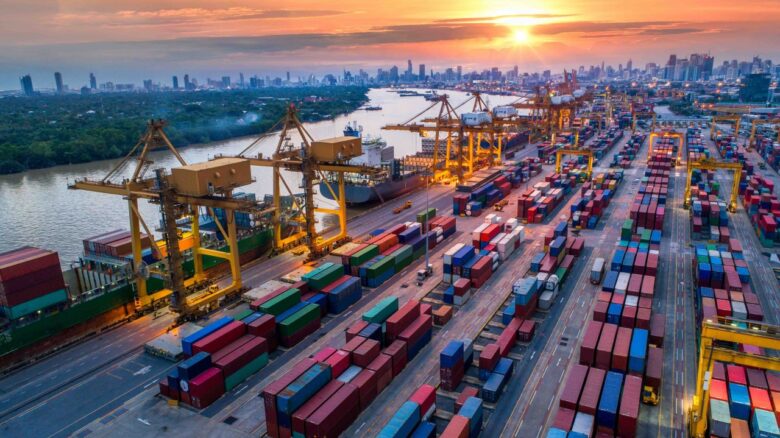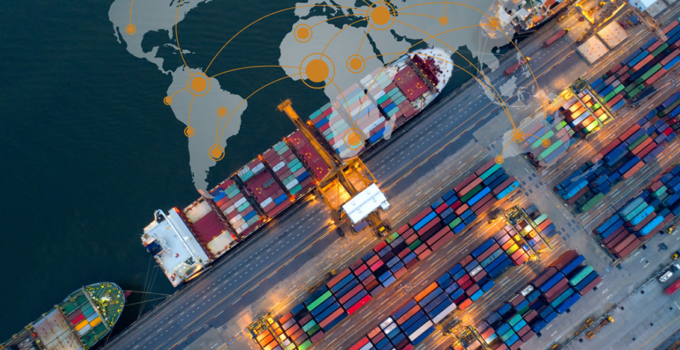Freight tendering is the process where shippers solicit bids from carriers to transport goods. It’s a critical component in the logistics strategy of companies, determining how effectively they can move products from point A to B without compromising on cost, time, or quality.
But it’s not just about finding a carrier; it’s about finding the right match that aligns with a company’s logistical requirements and budgetary constraints.
Open Freight Tendering

Source: conference-board.org
Open freight tendering is akin to casting a wide net into the vast ocean of the shipping marketplace, inviting bids from a broad spectrum of transportation companies. This approach is characterized by its inclusivity, allowing any carrier with the requisite capabilities to submit a proposal.
The primary allure of open tendering lies in its potential to uncover competitive rates and novel logistics solutions, fostering a vibrant marketplace of ideas and services.
Advantages of Open Tendering
- Competitive pricing ─ By inviting bids from a wide array of carriers, shippers are likely to receive more competitive rates. This competition can drive down transportation costs, providing a direct benefit to the shipper’s bottom line.
- Market insights ─ Open tendering offers a window into the market dynamics, including prevailing rates, services, and capacity. This insight is invaluable for companies looking to stay ahead of market trends and make informed logistics decisions.
- New partnerships ─ It opens doors to new business relationships, expanding a company’s network of carriers. These fresh alliances can introduce innovative logistics strategies and technologies that enhance operational efficiency.
Challenges of Open Tendering
However, the openness of this approach brings its set of challenges. The sheer volume of bids can be overwhelming, requiring significant resources to evaluate each proposal thoroughly. Moreover, the variability in the quality and reliability of carriers can pose risks to supply chain integrity.
Exploring Closed Freight Tendering

Source: linkedin.com
In contrast, closed freight tendering is more like fishing with a select few lures, targeting a specific group of carriers that a shipper has pre-qualified. This method involves inviting bids from a limited list of carriers, typically those with whom the shipper has established relationships or vetted for their service quality and reliability.
Advantages of Closed Tendering
- Quality and reliability ─ Closed tendering allows shippers to work with carriers they trust, reducing the risks associated with cargo safety, timely delivery, and service consistency.
- Efficiency in bid evaluation ─ With fewer bids to assess, companies can allocate more time and resources to thoroughly evaluate each proposal, ensuring that the chosen carrier aligns perfectly with their logistics requirements.
- Strengthened partnerships ─ This method fosters deeper relationships with carriers, paving the way for more favorable rates, improved service levels, and potential access to dedicated resources or capacities.
Challenges of Closed Tendering
The main drawback of closed tendering is the potential for higher costs due to less competitive pressure on pricing. Additionally, it may limit exposure to innovative logistics solutions and market trends, potentially resulting in missed opportunities for optimization and cost savings.
Balancing the Scales
The choice between open and closed freight tendering is not binary but rather a strategic decision based on a company’s specific needs, market conditions, and risk tolerance. Many businesses find value in employing a hybrid approach, utilizing open tendering to explore the market and closed tendering to solidify relationships and ensure service quality.
Strategic Considerations
When navigating the freight tendering process, companies must weigh various factors, including shipment volume and frequency, the complexity of logistics requirements, market volatility, and the criticality of the cargo. These considerations will guide the choice of tendering method and the level of engagement with potential carriers.
Technology as a Catalyst

Source: chitkara.edu.in
Advancements in logistics technology, such as Transportation Management Systems (TMS) and digital freight platforms, are transforming the tendering process. These tools streamline bid solicitation, evaluation, and selection, enabling companies to make more informed decisions faster. They also facilitate communication and collaboration between shippers and carriers, enhancing the efficiency and effectiveness of freight tendering.
Building a Sustainable Model
Optimizing costs through freight tendering is not a one-off effort but a continuous pursuit. Companies must remain agile, adapting their tendering strategies to reflect changes in market dynamics, business objectives, and logistics capabilities.
This adaptive approach ensures that freight tendering remains a potent tool for cost optimization in the ever-evolving landscape of global logistics.
Embracing Sustainability in Freight Tendering
As businesses worldwide intensify their focus on sustainability and environmental stewardship, the freight tendering process emerges as a critical area where eco-friendly practices can be integrated.
Embracing sustainability within freight tendering involves selecting carriers who not only offer competitive pricing but also adhere to green logistics practices. This approach encompasses the utilization of fuel-efficient vehicles, optimization of load capacity to reduce the number of trips, and prioritization of carriers with a proven track record of reducing carbon emissions.
Sustainable Practices as a Competitive Advantage
Incorporating sustainability criteria into the tendering process does not merely serve environmental goals; it also aligns with the growing consumer demand for responsible supply chain practices.
Companies that prioritize green logistics partners demonstrate their commitment to corporate social responsibility, enhancing their brand image and competitiveness in the market. Moreover, sustainable freight tendering can lead to long-term cost savings through improved fuel efficiency, reduced waste, and avoidance of potential environmental compliance costs.
Leveraging Data for Informed Decision-Making

Source: ismguide.com
In the realm of freight tendering, data is king. The ability to collect, analyze, and leverage data can significantly enhance the effectiveness of the tendering process, enabling businesses to make informed decisions that optimize costs and operational efficiency.
From historical shipping data and carrier performance metrics to real-time market rates and capacity trends, the wealth of information available to shippers is vast.
Harnessing Analytics for Strategic Insights
Advanced analytics and artificial intelligence tools are revolutionizing the way companies approach freight tendering.
By analyzing patterns and trends within data, businesses can predict market movements, identify potential cost-saving opportunities, and select carriers that offer the best balance of price, service quality, and reliability. Additionally, data-driven insights can help companies anticipate and mitigate risks in their supply chain, such as capacity shortages or disruptions due to geopolitical events.
The Future Is Collaborative
Looking ahead, the future of freight tendering is poised to become increasingly collaborative. Digital platforms and blockchain technology are paving the way for more transparent, efficient, and secure tendering processes, enabling closer cooperation between shippers and carriers.
This collaborative ecosystem fosters a shared commitment to achieving cost optimization, service excellence, and sustainability goals, marking a new chapter in the evolution of freight logistics.
Through the integration of sustainability, advanced data analytics, and collaborative technologies, companies can elevate their freight tendering strategies to new heights. These advancements not only drive cost optimization but also contribute to the creation of a more resilient, efficient, and environmentally conscious global supply chain.

Source: allthingssupplychain.com
Final Words
Freight tendering, in its open and closed forms, offers a spectrum of opportunities for businesses to optimize logistics costs. The choice between these methods hinges on a strategic assessment of a company’s operational needs, market conditions, and the desired balance between cost, quality, and reliability.
Leveraging technology and fostering strong relationships with carriers further empowers companies to navigate the complexities of freight tendering effectively. As companies continue to explore and refine their tendering strategies, the ultimate goal remains clear: achieving a seamless, efficient, and cost-effective supply chain.




